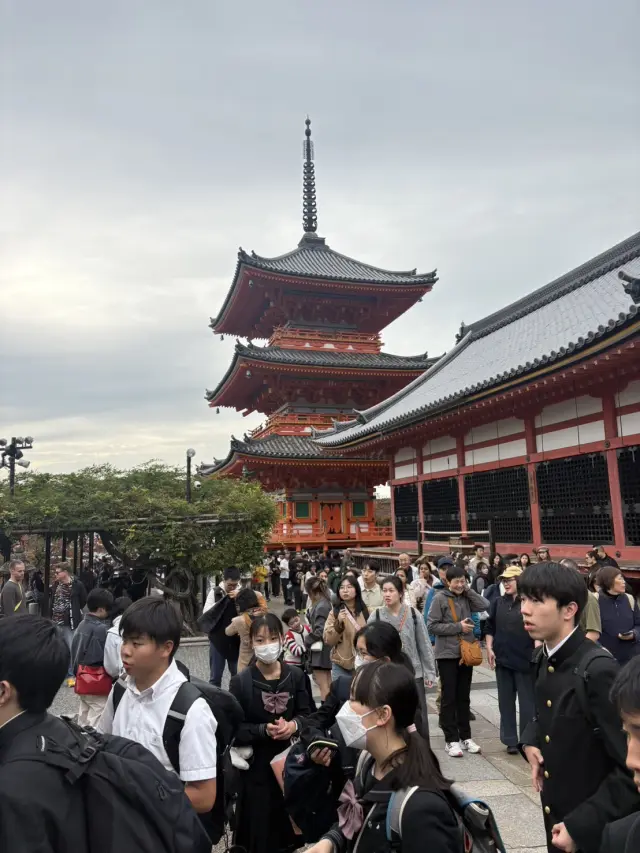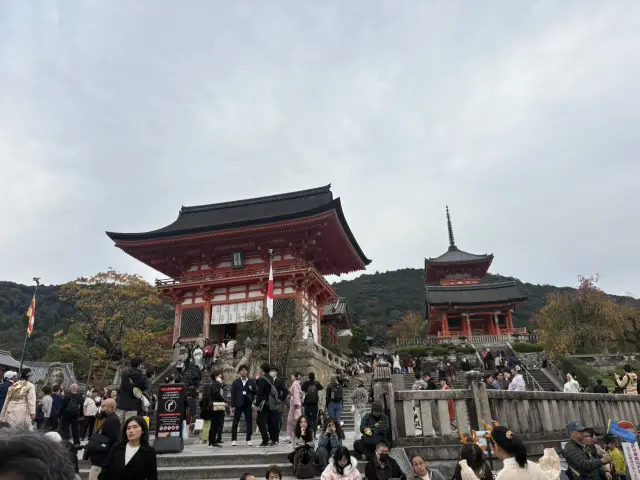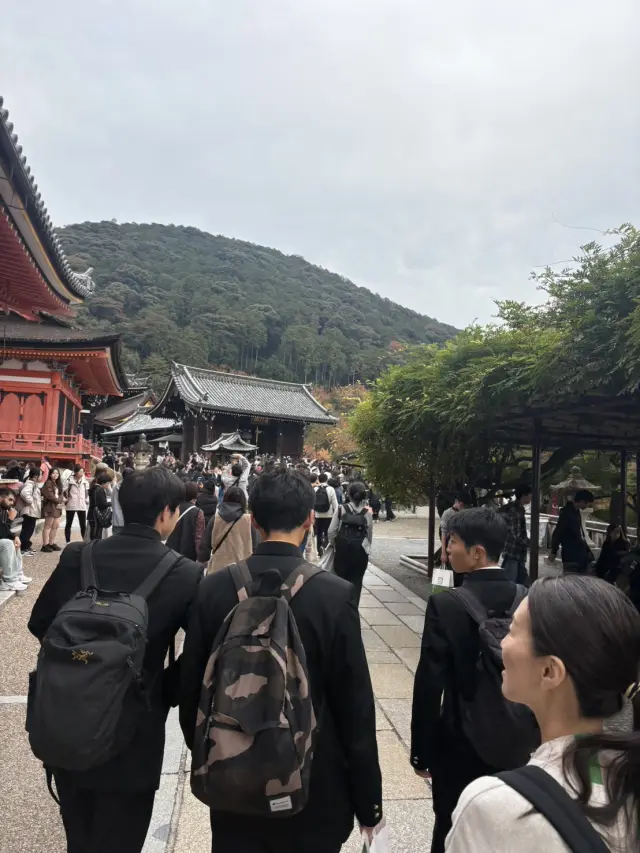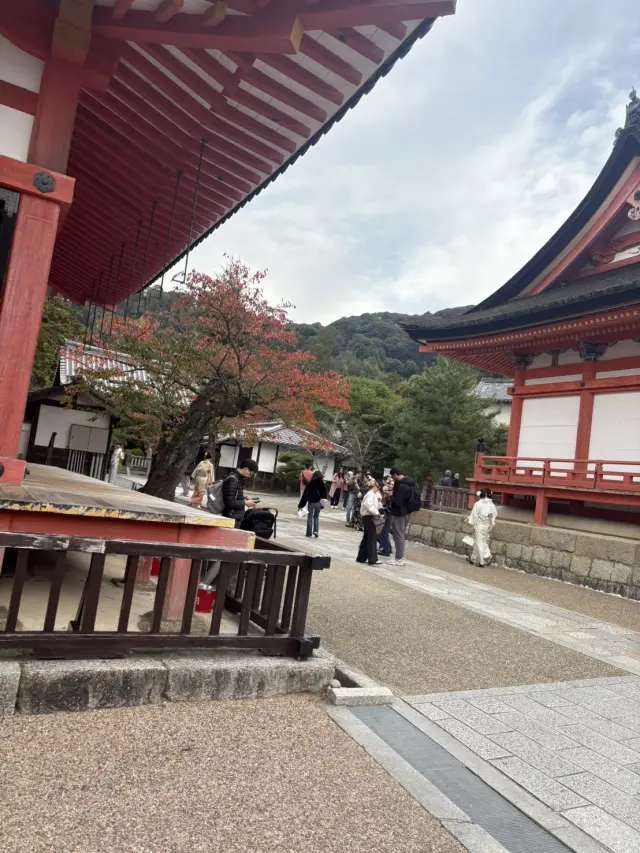Opened in the year 778, the temple was registered as a UNESCO World Cultural Heritage Site in 1994. In the 130, 000 m2 area of the precincts spread out on the hillside of Mt. Otowa, there are more than 30 cathedrals and monuments, including national treasures and important cultural properties. The changes in scenery of the Kiyomizu-dera temple can be seen every season, with cherry blossoms in spring, greenery in summer, colored leaves in autumn, and snow in winter.
Once you climb up the hill road, you will be greeted by the vermilion-colored “Niomon.” If you continue climbing further up the stairs, you will see the 31m tall "triple tower.” It is one of the tallest in Japan and has a superb viewpoint where the vast scene of Kyoto city could be seen. The "main hall,” well-known for "jumping off the Stage of Kiyomizu (meaning to make a bold decision),” is a must-see. It is built to extend out on the slope of the mountain, and was constructed by the traditional Japanese construction method where wood is combined without using nails. It is approximately 13m in height and is equivalent to a 4-story building. The main body of worship enshrined, the "Eleven-faced Senju Sengan Kannon Statue," is a secret Buddha that, by the rules, could only be seen once every 33 years; the next time it would be shown is scheduled for 2033. Still, the "Gozen '', a slightly reduced size of the main body of worship, could be worshipped anytime.
On the east side of the main hall flows the "Otowa no Taki" waterfall, which is the origin of the name of the temple. After using the ladle to scoop the sacred water of the three lines of falling water, please pray for “purification of the six roots of perception” and “fulfillment of wishes.”
Highlights
-
Is close to the center of Kyoto and is thus easy to access.
-
Is registered as a World Cultural Heritage, and is a popular tourist attraction in Kyoto.
-
Has many places to see, such as the largest "triple tower" in Japan and the "main hall" on the slope of the mountain.
-
With cherry blossoms in the spring, greenery in the summer, colored leaves in the autumn, and snow in the winter, the temple scenery could be enjoyed throughout the year.











































